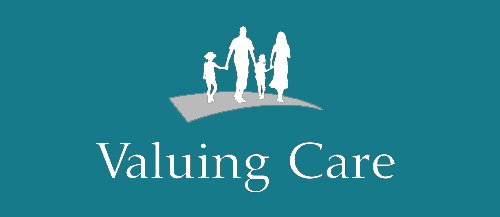High 50: Tips for staying afloat when paying for parents care
A global community for people over the age of 50 who believe the journey, in all its wonder, has only just begun features Valuing Care. The publication covers the topic: Your folks’ care home could set you back six figures – even with the proposed cap. Fees specialist Ray Hart has tips for cost control.
New figures show that a place in a UK care home is now £28,666 a year (up 23 per cent) and more in the South-East. Fees specialist Ray Hart has tips on staying afloat when paying for parents’ care. With the cost of care rising at almost three times the rate of inflation, this is another worry for the majority of those who fund either their own care or that of a loved one.
In some circumstances, this can have tragic results. In 2013, a court heard that a 74-year-old, devoted son attempted to murder his frail 93-year-old mother because he felt the only way he could afford her care was by selling his own home. Although that’s an extreme incident, many members of the ‘sandwich generation’ find themselves in a similar position to this man: overwhelmed by spiralling costs. Consider these facts: more than 50 per cent of older people are billed for all or part of their residential and nursing costs, and the average weekly care home cost is between £500 and £900. Yet almost one in four people are unaware there may be any charge at all. No wonder it causes such a huge shock.
Cap on lifetime care fees
To be technical, when the care cap comes into force in April 2016, top-up fees paid above the standard local authority rate may not count towards the cap. Likewise, and logically, they may not be covered by the state once a relative has reached the £72,000 limit.
For example, if a care home’s fees were £650 a week and the local authority standard rate was £500, that might entail a top-up of £150 a week, plus a bed and breakfast charge.
Once the ‘extras’ have been stripped out, it would take more than four years before the private payer was deemed to have reached the cap. And rather than £72,000, this will actually cost more than £160,000.


Cost of care rising more than inflation
With the cost of care rising at almost three times the rate of inflation, this is another worry for the majority of those who fund either their own care or that of a loved one.
In some circumstances, this can have tragic results. In 2013, a court heard that a 74-year-old, devoted son attempted to murder his frail 93-year-old mother because he felt the only way he could afford her care was by selling his own home.
Although that’s an extreme incident, many members of the ‘sandwich generation’ find themselves in a similar position to this man: overwhelmed by spiralling costs.
Consider these facts: more than 50 per cent of older people are billed for all or part of their residential and nursing costs, and the average weekly care home cost is between £500 and £900. Yet almost one in four people are unaware there may be any charge at all. No wonder it causes such a huge shock. High50 readers, though, can be prepared. You can read my article on fee negotiation and financial risk (below), and can consult the Valuing Care Fees Calculator.
You need the right information and a good understanding of the expenses involved. And only when you are familiar with the aspects that can alter the price are you ready to consider a home.
Here, then, are the five main elements to bear in mind. It’s interesting how many parallels there are to buying a house:
The location
Generally speaking, care homes in the south-east or those in pretty coastal regions are the most expensive. So if location is not an issue, consider moving to a less expensive area such as the north-east, where rates are below the national average.
If, however, moving to a completely new area is out of the question, you could increase your options and look at care homes within a certain radius, as this may throw up cheaper options.
Size and type of care home
Often the larger care homes have facilities to match. A small independent home may provide very basic facilities, whereas a large national chain may offer facilities comparable to a luxury hotel, with fees reflecting the difference in provision.
If a cinema room, library and onsite health spa are on your wish list, then expect to pay high sums for the privilege. Otherwise, decide exactly what facilities are required and which are not, so that you only pay for amenities your parent will use.
The type of care
Be prepared for the level of care to have a sizeable impact on costs. Nursing care is certainly more expensive than residential care. If full-time assistance is required, rather than part-time, again charges are higher, as is specialist care.
Personal space in the home
Most homes these days provide private bedrooms. However, for those who are happy to share bathroom facilities, there should be a reduction in price. (Conversely, if a private bathroom or a seaview is a must, a premium is usually added.)
Hidden extra charges
Those responsible for paying monthly care bills often notice additional charges for added value services such as hairdressing, days out, newspapers and so on. Unless you keep a close eye on them, they can soon accumulate. The best advice here is to understand what the standard fees cover and, if any additional costs are incurred, what these are likely to be.

